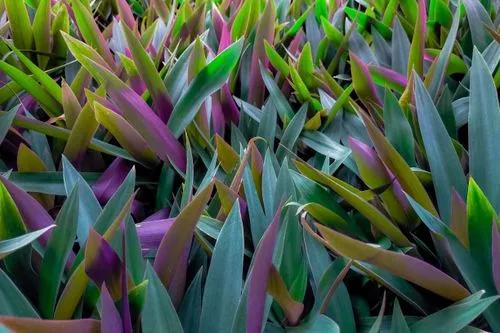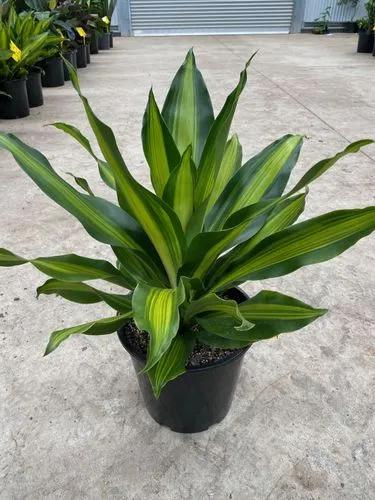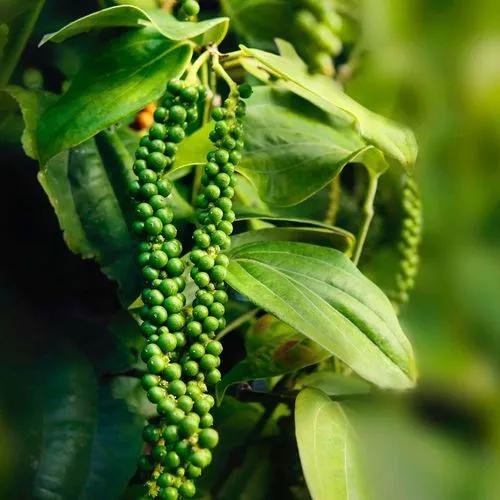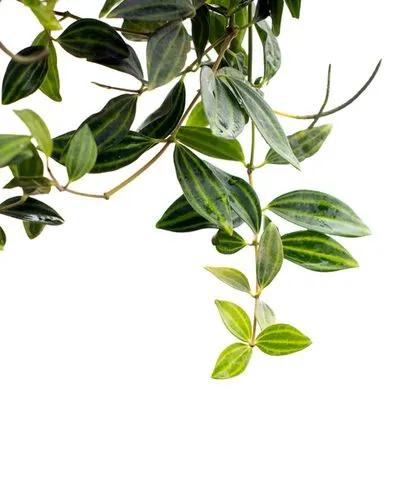Ficus microcarpa is a tropical tree with smooth light-gray bark and entire oblanceolate leaves about 2-2.5 inches (5–6 cm) long which in Mediterranean climates grows to about forty feet (twelve meters) tall and with an equal spread of crown. Where conditions are favorable for the banyan habit (tropical and humid subtropical) it grows much larger, producing great numbers of prop roots. The largest known specimen is Auntie Sarah's Banyan at the Menehune Botanical Gardens near Nawiliwili, Kauai, Hawai'i which is 110.0 feet (33.53 meters) in height, 250 feet (76.2 meters) in crown spread, and having over one thousand aerial trunks. The F. microcarpa with the thickest trunk is also in Hawai'i, at Keaau Village, Puna District, on the Big Island. Its main trunk is 28.0 feet (8.53 meters) thick at breast height. It is also 195.0 feet (59.44 meters) in limb spread. Only slightly smaller is the "Banyan at Lomteuheakal" in Vanuatu, a F. microcarpa with a main trunk 27.15 feet thick (26 meters circumference).
Moclame Ficus Care
Ficus microcarpa 'Moclame'
Other names: Chinese Banyan, Malayan Banyan, Indian Laurel, Curtain Fig, Gajumaru, Pot Belly Fig, Laurel Fig, Laurel Rubber, Curtain Fig And Strangling Fig



How to Care for the Plant

Water

Consistent watering is key for this plant. Lightly water regulary, as overwatering or letting the plant stand in wter will cause leaf drop. Better to water a little more frequently that too much.

Pruning

This will prevent unsightly stubs and restore the size and appearance of the ficus. Cut at a slant away from the node or secondary branch. If you have a damaged ficus with lots of dead growth, prune away no more than one-third of the material. You can cut more off later as the plant recovers.

Fertilizer

The best fertilizer for ficus trees is a balanced blend, such as 8-8-8, applied monthly in spring and summer and every other month in fall and winter.

Sunlight

A high light plant, the Ficus Moclame prefers bright, indirect light, but benefits from a few hours of direct sun, ideally from a southern or western facing exposure. Eastern exposure can also work as long as the plant is directly in the window and the space feels very bright.

Soil

Ficus Moclame prefer soil that is consistently and evenly moist, not soggy. You want to allow the top 1” - 2” of the soil to dry between waterings.

Temperature

Temperature: Ideal temperatures are 16-24°C. Avoid cold draughts. Humidity: No specific requirements, although the occasional misting wouldn't go amiss.

Additional

The ficus is a poisonous plant. If you come into contact with the white milk juice, this can irritate the skin. Eating the leaves by children and pets can cause little bubbles on the skin.

Popularity

216 people already have this plant 18 people have added this plant to their wishlists
Discover more plants with the list below
Popular articles






